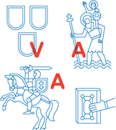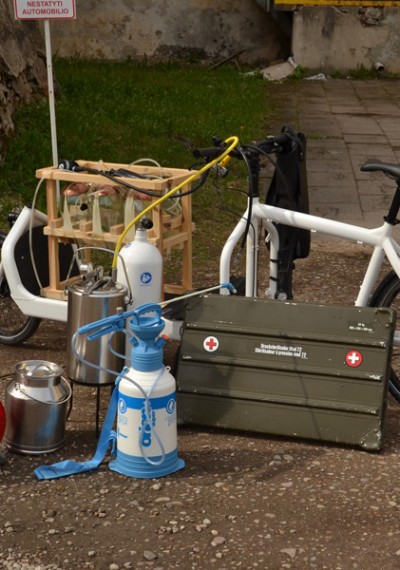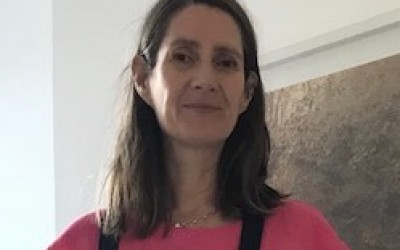Life in the Folds.Baroque Tensions, Affects and Movements
One-day Seminar in Vilnius, April 25, 2024
Location: Sapieha Palace, Vilnius
The term baroque has had many meanings and applications over time. It emerged in the 18th century to describe the so-called bizarreries and moral decay in architecture and painting of the period and the previous century. Later, it came to refer to those aspects of 17th century art that were characterized by dynamic composition, dramatic use of contrasts and a certain raw naturalism. In the 20th century, Baroque and New World Baroque has been used to describe various trends in European and Latin American modernism and popular culture characterized by textural richness, emotional impact, and movement. What do we mean by and how do we fathom the baroque today?
In this seminar, we will explore the Baroque both as a historical epoch filled with political tensions, expansive capitalism, the centralized power of absolutism and dramatically changed living conditions for ordinary people, and as a transhistorical and transcultural way of organizing matter dynamically and sometimes defiantly that can manifest itself at different locations, including in contemporary art and culture. The seminar will discuss the Baroque in both, often intertwined, respects: as historical and as contemporary. On the one hand, the baroque was a historical era when war and strife over religious and territorial issues ravaged Europe, and when climate change and increasing demand for new luxury goods led to the colonization of overseas peoples and territories - with disastrous and long-lasting consequences that still shape our world and ways of thinking. It was also a time of rapid change and wild experimentation in art, philosophy and science. On the other hand, the historic Baroque period spawned new ways of thinking about the relationship between form, affect and matter that continue to preoccupy historians, artists and scientists. 20th century philosophers and artists such as Walter Benjamin, Gilbert Simondon, Gilles Deleuze, Henri Michaux, Alejo Carpentier, Édouard Glissant and Christine Buci-Glucksman have contributed to rethinking the Baroque from both a historical and contemporary perspective. The seminar "Life in the Folds. Baroque Tensions, Affects, and Movements" invites you to reflect on both the historical legacy of the Baroque as well as the challenges it poses and the possibilities it offers to us today.
Organizers:
Vilnius Academy of Arts, Department of Doctoral Studies, Department of Art History and Theory
University of Copenhagen, PASS – Centre for Practice-based Art Studies
In collaboration with:
Vilnius Academy of Arts, Department of Sculpture
Sapieha Palace, branch of the Contemporary Art Centre, Vilnius
Programme:
9:30:9:40 Coffee and welcome word dr. Julija Fomina, director of PhD Studies in Art History and Theory, Vilnius Academy of Arts
9:40-9:55 Introduction to the seminar Mikkel Bogh, Professor of Art History, Director of Center for Practice-based Art Studies, University of Copenhagen
9:55-10:10 Opening remarks and short introduction to Sapieha Palace dr. Gintautė Žemaitytė, Executive director, Sapieha Palace
10:10-10:40 Introduction to the history of Sapieha Palace Laura Misiūnaitė, Head of cultural education, Sapieha Palace
10:40-11:20 Internationality of Baroque: Four Cases of Artworks in the Church of the Holy Spirit in Vilnius Birutė Valečkaitė, PhD fellow in Art History and Theory, Vilnius Academy of Arts
11.20-12:00 Between Fight and Fun in 17 th Century Denmark: The Peculiar Case of King Frederik III’s Wet Trap Chair Casper Thorhauge Briggs-Mønsted, PhD fellow, Dept. of Arts and Cultural Studies, University of Copenhagen
12:00-12:40 Disruptive Travelling: Subversions of Power and Poetic Relations in Baroque Images between Europe and the Americas
Mikkel Bogh, Professor of Art History, Director of Center for Practice-based Art Studies, University of Copenhagen
12.40-13.40: Lunch
13.40-14:20 Guided tour in the exhibition Refuge Virginija Januškevičiūtė, Edgaras Gerasimovičius
PhD fellows in Art History and Theory, Vilnius Academy of Arts
14.20-15:00 Inflection, Field, and Singularity: Towards a Concept of Form in Contemporary Art Practice through Gilbert Simondon, Gilles Deleuze, and Henri Bergson Henrik B. Andersen, Professor, Dept. of Sculpture, Vilnius Academy of Arts
15.00-15.40 “By means of Rome”: The Baroque as Lesson and Resource in Robert Venturi’s Oeuvre Kasper Lægring, New Carlsberg Foundation Postdoctoral Fellow in Art History, Aarhus University
Coffee break
16.00-16:45 Baroque folds and afterlives: а Roundtable discussion w. speakers and audience, chaired by Mikkel Bogh
___________
Credits: Ana Hatherly (1929-2015) Untitled (from the “World Maps” series), 1970 Watercolour and Indian ink on paper 22.2 x 30 cm Private collection on deposit at the Calouste Gulbenkian Museum – Modern Collection







